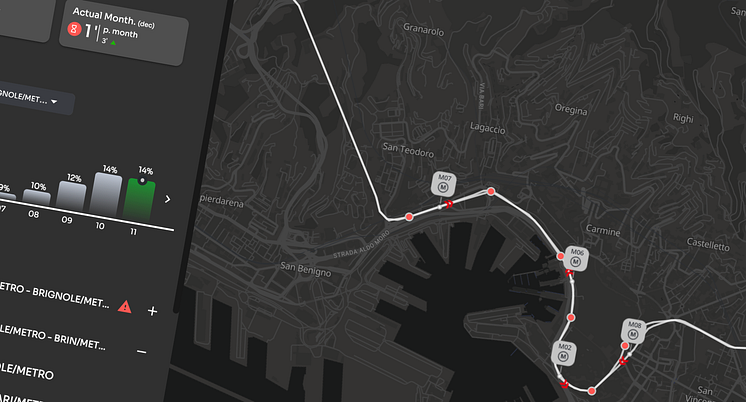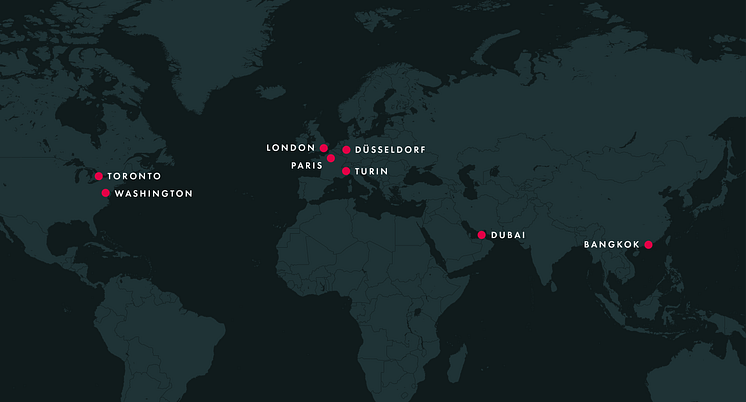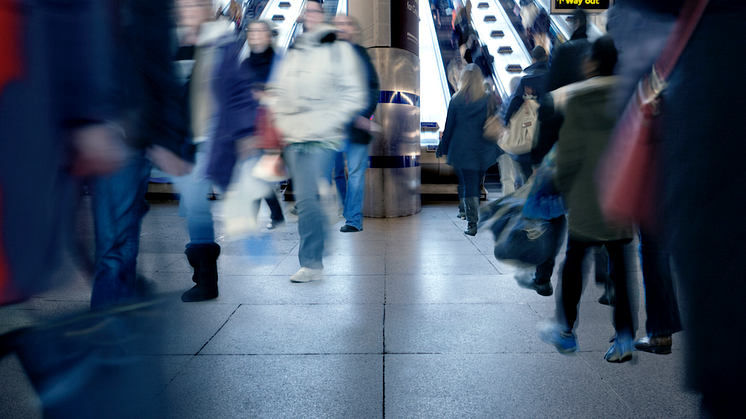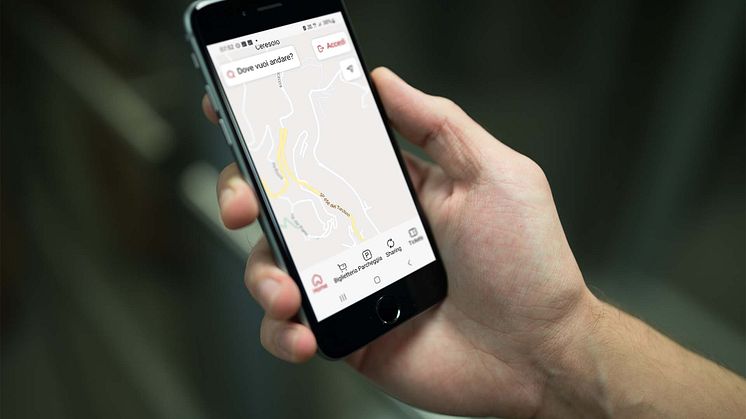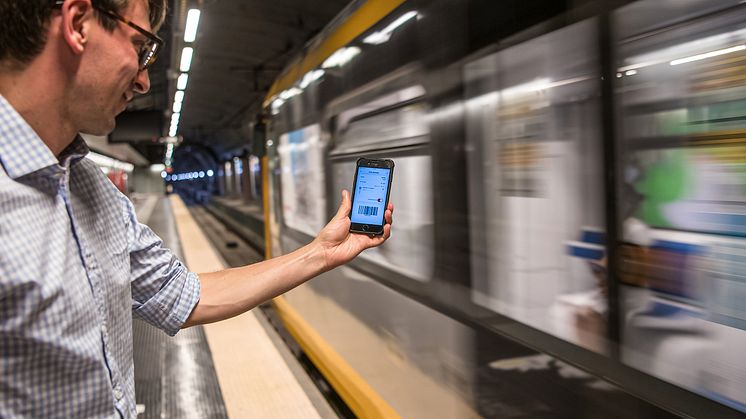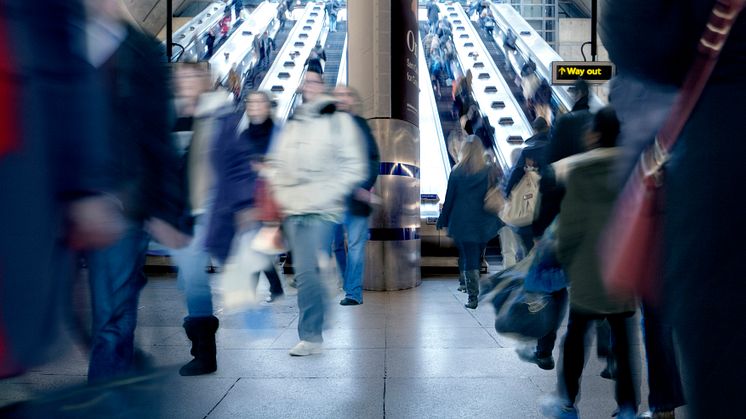
Press release -
Three in four people prefer better-connected public transport over driving, global study reveals
Majority would accept increased road taxes to fund better-connected public transport
- Hitachi Rail publishes first-of-its-kind major study into attitudes towards public transport across eight global cities
- Three-quarters of people would use public transport more often if they had a single effective digitised transport app
- The single most important benefit of such an app is the ability to avoid crowding, according to 3 in 4 respondents
- In boost for cities’ decarbonisation strategies, two-thirds of respondents would be willing to pay for better services via more road charges, despite increased car usage
Today, Hitachi Rail publishes a major new report investigating attitudes towards public transport and smart mobility in eight cities around the globe. The first-of-its-kind study finds that three-quarters (75%) of people would choose a better-connected public transport system, rather than driving. The report finds a strong global demand for smart transport solutions to deliver enhanced cost, convenience and comfort, with a willingness to pay for improvements through increased taxes on private transport.
The research for the report was conducted by leading independent consumer research company, Savanta ComRes. The research investigated over 8,000 peoples’ attitudes in eight major global cities: Washington D.C., Toronto, London, Paris, Dusseldorf, Turin, Dubai and Bangkok. Hitachi Rail commissioned the research to better understand the push and pull factors for using public transport and how they interact with Hitachi Rail’s smart, digital solutions the business is rolling out to support cities around the world.
What motivates peoples’ travel decisions?
The research provides useful insights for transport planners seeking to understand how to increase public transport usage. Overcrowding (48%) and busyness (42%) of services are the single biggest factors that put people off. In contrast, people identify the three C’s – cost, convenience and comfort – as their biggest motivators to travel, with 79% noting the appeal of the ability to avoid crowded services, and 78% highlighting the importance of shortest journey time, and cheapest travel option.
What do passengers want?
A powerful three-quarters (75%) of global respondents would likely choose a better-connected public transport system, rather than driving. People across cities also share a clear sense of how public transport networks can overcome existing barriers, placing an emphasis on the benefits of digitisation. For example, 73% suggested they would be more likely to travel on public transport if they could see live information on crowding levels on services. This rises to almost 9 in 10 people in Bangkok. The research also shows the public have a strong general understanding of what ‘smart’ transport means, driven by high levels of take-up of digital apps, with 59% of respondents using them to plan or book their journeys.
However, the move towards digitisation currently presents barriers as well. Almost two-thirds (63%) of respondents are put off from using public transport where they needed to use multiple different apps; while only just over half were willing to share their payment details with multiple travel apps. This reticence varies dramatically from country to country, with far lower trust in North America and the UK, compared to mainland Europe and Asia.
Across every city, the majority (averaging 71%) noted that they now travel differently following the pandemic. Those surveyed do however expect that how they travel will change again (59%). This provides hope for municipalities around the world, whose net-zero and air pollution targets require solutions that reduce the use of polluting vehicles.
How do we fund better-connected transport networks?
The research finds that people would also be prepared to pay more for better-connected public transport. When faced with the same option of a better-connected transport system but at a higher cost than driving, 3 in 5 people (60%) still suggested that they would choose to travel this way.
The study also finds that one possible route for charging and paying for better-connected public transport could be via new or increased road charges. Overall, 63% were in favour of this as a revenue source, with only 14% against – despite almost two-thirds of people (63%) believing that they now drive more post-pandemic. Even in cities with the highest percentage of driving commuters, there is still a majority in favour of such taxes (51% in Toronto and 52% in Washington).
Commenting on the launch of the report, Ludmil Neykov, Chief Digital Officer, Hitachi Rail, said:
“Cities face significant pressure to reduce the cost of operating their transport networks, cut congestion and minimise CO2. This can be achieved by moving people out of their cars and onto public transport, which poses a significant challenge for many cities and for many reasons.
“Our research shows that three-quarters of people would use public transport more often if it was better-connected and more convenient, and that access to a single smart phone app for the entire network would be preferable. From Turin to Paris, and from Toronto to Bangkok, we are ready help cities to reduce costs, carbon and congestion through our digital systems and services.”
Commenting on the launch of the report, Ilaria Gavuglio, CEO of Genoa’s public transport operator AMT, said:
“Public transport must sit at the heart of the mobility revolution, becoming the backbone for how people travel in large urban and suburban areas. Our focus is on smarter digital transport - as AMT delivers in Genoa through the GoGoGe app based on Hitachi Rail’s 360Pass technology. The story for future public transport is based in conveneinece and comfort, and will be delivered by digitalisation. We have to work to deliver a system that is increasingly attractive, effective and sustainable, delivering green transport for our citizens and for the benefit of society. The challenge is to increase the use of public mobility compared to private vehicles. Our Mobility-as-a-Service approach builds a business model that is designed to meet passenger needs: easy, immediate, integrated and comfortable.”
Our Smart Mobility vision
As a global leader in transport and technology, Hitachi Rail’s vision for smart mobility is to digitise and optimise every part of the journey across different types of public transport. In July 2022, Hitachi Rail launched its first smart mobility project in Genoa, Italy, digitally connecting public and private hire transport across the entire city. Using technology from Hitachi’s new smart mobility suite called Lumada Intelligent Mobility Management, trial-users had access to the 360Pass smart phone app which enabled them to plan their multi-modal journey with live-time service updates, including information on the crowding levels of incoming bus services. By placing over 7,000 Bluetooth sensors on services and at stops around the city, passengers could also travel using hands-free ticketing, with the app simply calculating the best-priced multi-modal fair at the end of the day. More recently, Hitachi Rail also launched its first commercial application of this technology in Trentino.
The new suite embodies Hitachi Rail’s holistic vision for smarter mobility, incorporating solutions across three key areas: smart ticketing, mobility management and electrified mobility solutions. While the firm is known for delivering trains and rail infrastructure around the world, including the iconic Shinkansen bullet trains, the digitisation of transport systems is an important and growing area of focus.
ENDS
Notes to Editors:
About the survey
- The polling was conducted by Savanta-ComRes on behalf of Hitachi Rail, and was carried out between August and September 2022.
- 8073 respondents were surveyed across eight cities; 1009 in London, 1004 in Washington D.C., 1000 in Toronto, 1002 in Paris, 1006 in Dusseldorf, 1020 in Turin, 1021 in Dubai, and 1011 in Bangkok
- The respondents were 50% male, 49% female (Proportions are rounded)
- For more information on the sample, please contact Ed.brown@hitachirail.com
Better-Connected: About Hitachi’s Lumada Intelligent Mobility Management suite
Lumada Intelligent Mobility Management is Hitachi’s new suite of smart mobility solutions for cities, transport operators and passengers.
The suite represents Hitachi Rail’s 360º vision for smarter mobility, incorporating solutions across three key areas:
- smart ticketing (including 360Pass)
- flow management for people and vehicles; and
- electrified mobility solutions
Using the suite’s 360Motion platform, a real time analytics tool that creates a digital twin of a city’s entire transportation network, operators can connect, scale and optimise any combination of these services. As a flexible platform, 360Motion can integrate technology from any existing provider, or draw from the range of solutions within the wider Hitachi group.
By offering ‘as a service’ business models to customers, Hitachi Rail aims to make it easier than ever for cities, operators and passengers to accelerate the transformation to more sustainable transportation.
For more information, please visit: Smart Mobility | Hitachi Rail and to download the report, please visit: Smart Mobility: Enhancing Public Transport | Hitachi Rail | Hitachi Rail
Topics
Categories
About Hitachi Rail: Hitachi Rail is a fully integrated, global provider of rail solutions across rolling stock, signalling, service & maintenance, digital technology and turnkey solutions. With a presence in 38 countries across six continents and around 14,000 employees, our mission is to contribute to society through the continuous development of superior rail transport solutions. We are proud of our global achievements, from our world famous ‘bullet trains’, to our signalling solutions and turnkey projects, state-of-the-art traffic management and digital solutions. Drawing on the wider Hitachi Group’s market-leading technology and research-and-development capabilities, we strive for industry leading innovations and solutions that can deliver value for customers and sustainable railway systems that benefit wider society. For information about Hitachi Rail, visit www.hitachirail.com.



